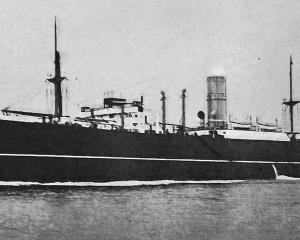It creates nice problems to have.
The wave of tourists coming to New Zealand's shores and particularly to the South is encouraging.
Businesses are boosted, jobs are created and places feel better about themselves.
This summer the influx has been particularly noticeable and is part of a trend over several years.
Visitor arrivals, and that includes visiting friends and family and business categories, topped three million in the year to the end of November.
These figures will go substantially higher through the peak period which runs through to March and April.
Tourism expenditure for last year was heading to top $30 billion, more than 10% up on the year before.
With dairy prices in the doldrums and dry, windy weather parching pastures, the boom in tourism, along with immigration, has been an economy saver.
The bulk of the visitors are from Australia, just a shortish flight from the cities of the east coast.
But the big story has, of course, been the surge from China.
This has exceeded all expectations and shows no sign of slowing even as questions are raised about China's economy.
The increase in visitor numbers, according to Statistics New Zealand, over the past year has been about 35% to about 350,000.
Overall annual visitor growth is 17%. The Chinese figures for Dunedin are equally impressive.
Dunedin Railways reported a jump in Chinese visitor numbers of 152% in the year to June 2015.
Other Dunedin attractions have been noticing many more Chinese customers as well.
This growth comes as the first of an expected 70,000 tourists a year fly directly to Christchurch from Guangzhou.
Southern China Airlines began flying to Christchurch three times a week from December 18, and this could become a daily service.
Dunedin tourism operators are sensibly joining forces to make sure their operations and attractions are not overwhelmed by their own popularity.
As Larnarch Castle director and Dunedin Host chairman Norcombe Barker said: "You don't want to destroy what you've got by chasing every last dollar.''
The pressure is therefore on to maintain the quality of tourist experiences as tourism grows.
As with so many areas of business, long-term strategy, planning and action pay long-term dividends.
New Zealand tends to build infrastructure after the need rather than in anticipation, in this case hotels.
At least, it would seem, the growth in tourism is spurring activity towards new high-end hotel development in Dunedin.
The pressure is more acute in Queenstown and Auckland, and more such activity can be expected there.
The problem of accommodating tourists is growing.
The rise of independent travellers is especially beneficial outside the tourist hot spots like Auckland, Rotorua, Queenstown and Milford Sound.
West Coast numbers are soaring and visitors in rental vehicles are much more likely to spread to Dunedin, Oamaru, the Waitaki Valley and around Central Otago and the Catlins.
This geographic spillover also needs to extend across the seasons to make better use of facilities and accommodation and provide more consistent employment.
Autumn and spring can be especially beautiful, with the added attraction of more of that precious commodity - space.
The Lindis Pass and the Mackenzie Country must, indeed, seem like another planet to someone from a crowded part of Europe or China.
Tourism, it must be remembered, can be fickle. Hence the importance of diversification in sources from around the world.
Visitor numbers from the United Kingdom, for example, are down about 12% over the past five years.
The growth from the world's second-most populous nation, India, is to be welcomed.
Numbers from South America remain tiny.
While growth does create issues, it must be hoped the South can build on its assets and establish and maintain vibrant, expanding and quality tourist businesses.











